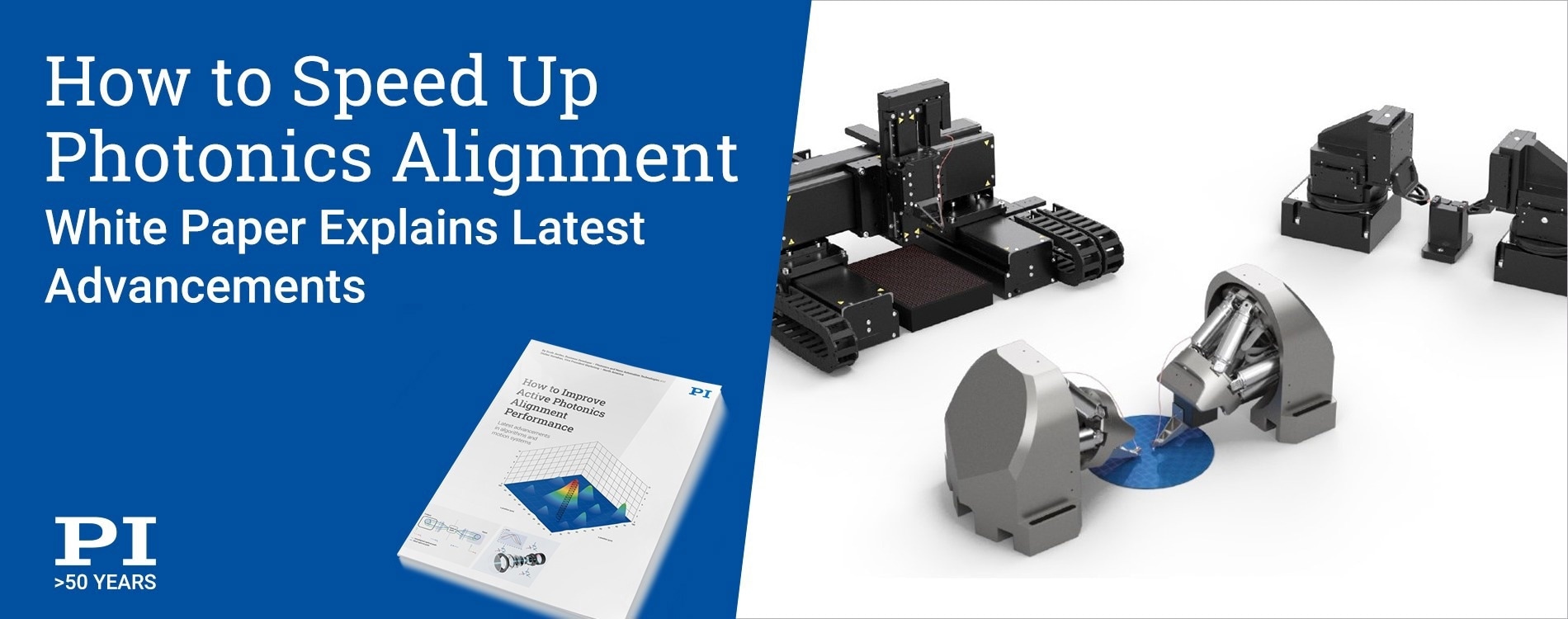Auburn, MA – In its latest white paper, the authors explain how photonics engineers and scientists can benefit from the latest alignment algorithms. The algorithms can be used with a wide range of hardware and applications, including mechanical motion stages, hexapod 6-DOF motion systems, fast piezo scanning stages, gantries for large area photonics test and validation, and even fast steering mirrors for free space optical communication.

Image Credit: PI (Physick Instrumente) LP
The whitepaper explores the expansion of photonics applications and the challenges faced in scaling up SiPh production, comparing precision requirements of photonics wafer probers with traditional wafer probers. It delves into the active alignment techniques necessary for precise positioning of signal-carrying elements, automation, advanced algorithms, and fast mechanics. The paper discusses different active alignment processes, including area scans, gradient searches, and compensating for position changes. It also covers a range of mechanisms, such as optical power meters, gantry platforms, hexapod mechanisms, modular alignment systems, mechanical bearing stages, and ACS Motion Control and Drive Modules, designed to meet various requirements. Additionally, it briefly touches on alignment applications beyond SiPh.
About PI’s System Options for Photonics Alignment
PI alignment systems are highly versatile and can be easily configured to work with a wide range of optics and silicon photonics devices. We offer different solutions to exactly match the application, including low-inertia 6-DOF microrobots, modular direct-drive alignment systems with precision mechanical bearings, granite-based gantries for large area photonics test and assembly, and air-bearing-based multi-axis solutions free from friction, wear, and maintenance.
Download the Photonics Alignment White Paper